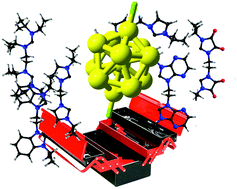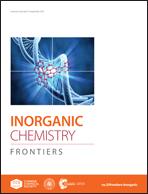Potential of N-heterocyclic carbene derivatives from Au13(dppe)5Cl2 gold superatoms. Evaluation of electronic, optical and chiroptical properties from relativistic DFT†‡
Abstract
Atomically precise gold superatoms offer useful templates to evaluate tunable properties via ligand engineering. Herein, the role of different linked N-heterocyclic carbene (NHC) protecting ligands ranging from strong to weak σ-donors was evaluated according to the Tolman electronic parameter (TEP), in species related to the classical [Au13Cl2(dppe)5]3+ nanocluster (1). Our results show a strong dependency on the nature of NHC, providing a useful design principle for the efficient tuning of the structural, optical, chiroptical and emission properties of the Au13Cl2 core. A sizable decrease is observed in the HOMO–LUMO gap for weaker σ-donor ligand cases, with a change in the LUMO nature from core-based orbitals in 1, to a π*-ligand nature. Furthermore, a shorter bridge results in interesting structural changes between the eclipsed ↔ staggered Au13Cl2 core unraveling the potential to convert light energy into mechanical work. Thus, the noticeable modulation of [Au13Cl2(NHC)5]3+ properties by different ligands underlies design rules for tunable clusters towards nanostructured materials, by taking advantage of the recent introduction of NHC-protected gold clusters.



 Please wait while we load your content...
Please wait while we load your content...